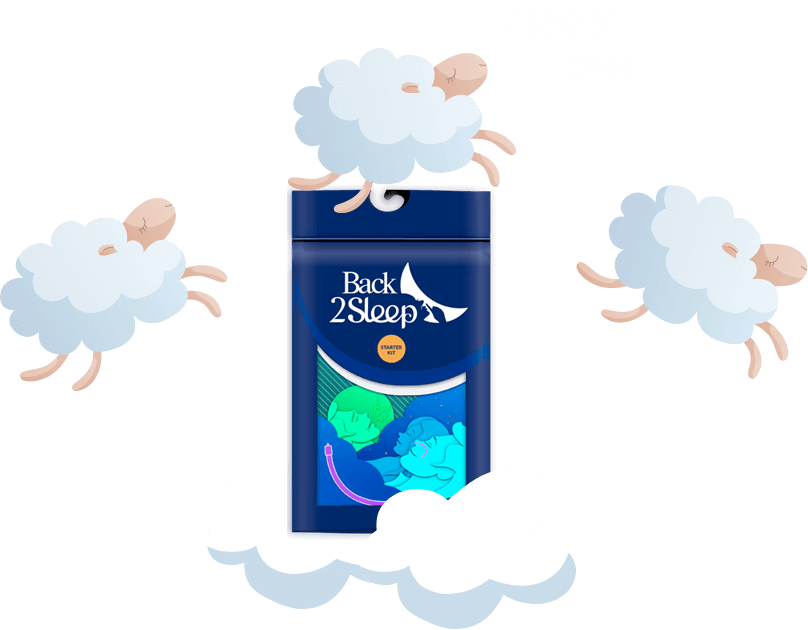Sleep apnea, also known as obstructive sleep apnea-hypopnea syndrome (OSAHS), is defined as a severe sleep disorder characterized by pauses in breathing during sleep. This condition can negatively impact the quality of life of the affected individual and poses significant health risks. It is therefore essential to address and treat this disorder. In this article, we will explore the symptoms and possible treatments for sleep apnea.
What Is Sleep Apnea?
As mentioned above, sleep apnea is a condition that occurs during sleep and manifests as uncontrollable breathing pauses lasting a few seconds. During these episodes, air ceases to flow through the airways. While these obstructive apneas are not inherently life-threatening, they degrade sleep quality by causing frequent awakenings, known as “micro-awakenings,” due to reduced oxygen levels in the blood and increased blood pressure.
There are three main types of sleep apnea:
- Obstructive Sleep Apnea (OSA): This type is characterized by a significant reduction in airflow and throat collapse due to muscle relaxation.
- Central Sleep Apnea (CSA): In this type, the issue originates in the brain, disrupting the respiratory control system and causing a communication breakdown between the nervous system and the respiratory muscles.
- Mixed Sleep Apnea: This complex condition combines both obstructive and central sleep apnea, meaning the patient experiences symptoms from both types.
What Are the Symptoms of Sleep Apnea?
Sleep apnea can be identified through several factors, which vary based on the type and severity of the condition.
Nighttime Symptoms:
- Loud, regular snoring: Especially common in obstructive sleep apnea, though healthcare professionals note that this symptom alone is not definitive.
- Repetitive breathing pauses: These pauses, lasting 10–30 seconds (or sometimes even minutes), are often noticed by a sleep partner.
- Choking or suffocation sensations: These episodes can cause sudden and frequent awakenings.
Daytime Symptoms:
- Excessive fatigue: The interruptions in breathing disturb sleep, leading to persistent tiredness during the day.
- Daytime sleepiness: This can result in unwanted naps, concentration difficulties, and memory problems due to insufficient sleep affecting cognitive functions.
- Morning headaches: These occur due to oxygen deprivation during sleep.
- Mood disturbances: Poor sleep quality can lead to anxiety and irritability.
Treatments for Sleep Apnea
Although there are various treatments for sleep apnea, a proper diagnosis is crucial to confirm the condition. Based on the diagnostic results, a doctor can determine the most suitable treatment.
Generally, the following treatment options are available:
Lifestyle Changes
- Weight loss: Obesity is a known risk factor for sleep apnea, making physical exercise vital for weight reduction.
- Avoiding alcohol and smoking: These substances can increase airway blockage risk and should be avoided.
- Improving sleep habits: Adopting a better sleeping position can help reduce symptoms of sleep apnea.
Medical Therapies
- Continuous Positive Airway Pressure (CPAP): This device uses a nasal mask to blow air and keep the airways open, effectively eliminating apneas.
- Mandibular Advancement Devices: These dental devices hold the lower jaw forward to improve airflow in the upper airways.
- Positional Therapy: This treatment encourages patients to sleep on their sides instead of their backs, as back sleeping often blocks the airways.
Surgical Interventions
- Airway surgery: For example, uvulopalatopharyngoplasty.
- Bariatric surgery: In cases of severe obesity.
Alternative Solutions
-
Back2Sleep Treatment: This innovative approach includes two effective products:
- Anti-Snoring Starter Kit: This device keeps the airways open, improving breathing during sleep. It reduces snoring and repetitive awakenings caused by airway obstruction. The kit includes four Back2Sleep devices of varying lengths (S, M, L, XL), specific nasal lubricant, and usage instructions.
- Intranasal Orthosis: A soft, flexible nasal tube that improves sleep quality by reducing snoring and nasal obstructions related to sleep apnea. Each box contains two Back2Sleep devices, natural nasal lubricant, and a user guide.
Sleep apnea is a disorder that should not be taken lightly. If you notice any symptoms, consult a healthcare professional who can prescribe the appropriate treatment. Untreated sleep apnea can lead to cardiovascular risks, depression, and a significant decline in quality of life.

- Wenn Sie sich für eine Auswahl entscheiden, wird die komplette Seite aktualisiert.
- Wird in einem neuen Fenster geöffnet.






